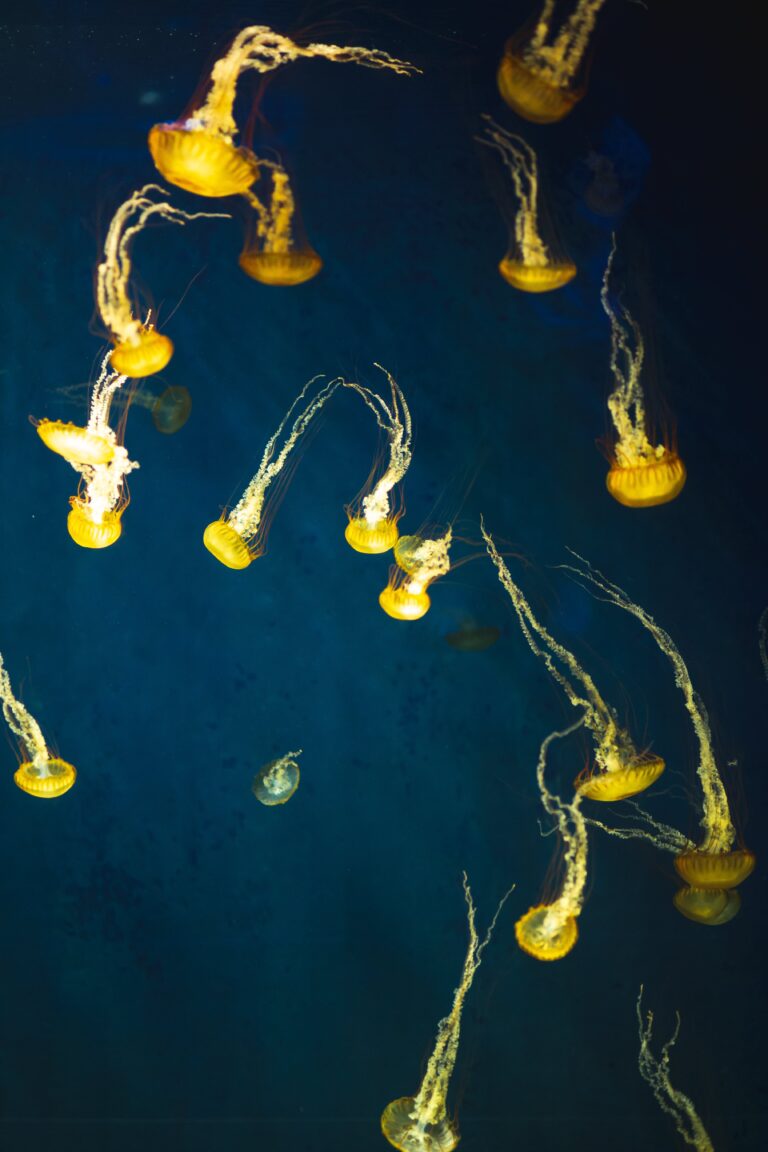Introduction
The mesmerizing depths of the ocean harbor a world largely unknown to us, teeming with mysterious and unique life forms. Among these, deep-sea cnidarians stand out as fascinating creatures, captivating scientists and enthusiasts alike. In this blog post, we will explore the importance of conserving these extraordinary deep-sea cnidarian species, delving into their unique characteristics, the threats they face, and the crucial role they play in maintaining the delicate balance of the marine ecosystem.
Introduction to Cnidarians:
Cnidarians are a diverse group of aquatic animals belonging to the phylum Cnidaria, which includes corals, jellyfish, sea anemones, and hydras. These remarkable organisms exhibit radial symmetry and possess specialized cells called cnidocytes, which contain stinging structures known as nematocysts. Cnidarians can be found in various marine environments, ranging from shallow coastal waters to the profound depths of the ocean.
Diversity of Cnidarians:
Cnidarians showcase a wide array of forms and sizes, from the delicate beauty of moon jellyfish to the intricate colonies of coral reefs. The phylum is divided into four main classes: Anthozoa (corals and sea anemones), Scyphozoa (true jellyfish), Cubozoa (box jellyfish), and Hydrozoa (hydras and Portuguese man o’ war). Each class exhibits distinct characteristics and adaptations, contributing to the overall biodiversity of cnidarians.
Unique Adaptations of Deep-Sea Cnidarians:
Deep-sea cnidarians, inhabiting environments with extreme pressure, limited light, and low temperatures, have evolved unique adaptations to thrive in these challenging conditions. One remarkable adaptation is bioluminescence, a phenomenon where these organisms produce light, often serving purposes such as attracting prey or deterring predators. The ability to emit light in the darkness of the deep sea provides a crucial advantage for these cnidarians.
Additionally, some deep-sea cnidarians exhibit elongated and delicate structures, maximizing surface area to capture scarce nutrients. These adaptations aid in their survival in nutrient-poor environments, where efficient resource utilization is paramount. Furthermore, many deep-sea cnidarians have developed enhanced sensory abilities to navigate through pitch-black waters, relying on specialized structures to detect prey and potential mates.
Surviving in the deep sea also requires efficient energy conservation. Some cnidarians in these environments display slow metabolic rates, allowing them to endure extended periods of food scarcity. These unique adaptations collectively contribute to the resilience and success of deep-sea cnidarians in some of the most extreme ecosystems on Earth.
In conclusion, the world of cnidarians encompasses a vast spectrum of life, with deep-sea members showcasing incredible adaptations to the challenging conditions of their habitat. Understanding these adaptations not only unveils the fascinating biology of these creatures but also sheds light on the broader mechanisms of survival in the deep-sea ecosystem.
Biodiversity
Deep-sea cnidarians play a crucial role in maintaining biodiversity within the oceanic ecosystems. Despite the challenges of extreme pressure, darkness, and low temperatures, these unique organisms have adapted and thrived in the abyssal depths. Cnidarians, including species like sea anemones and corals, contribute significantly to the overall biodiversity of the deep sea.
Their diverse forms and specialized adaptations have allowed them to carve out ecological niches in this harsh environment. From providing habitat for other species to forming intricate symbiotic relationships, deep-sea cnidarians contribute to the rich tapestry of life that characterizes the ocean’s depths. The biodiversity they sustain extends beyond their own species, influencing a myriad of other organisms in the complex deep-sea ecosystems.
Ecological Significance in the Oceanic Food Web
In the intricate dance of the oceanic food web, deep-sea cnidarians play a vital role as both predators and prey. Their position in the trophic hierarchy influences the abundance and distribution of various marine species. Many deep-sea cnidarians are predatory, capturing small organisms with their specialized stinging cells. These prey items may include small fish, plankton, and other invertebrates.
At the same time, deep-sea cnidarians serve as a critical food source for larger predators in the deep-sea environment. Species such as jellyfish are a staple in the diet of various marine creatures, creating a link between primary producers and higher trophic levels. The consumption of cnidarians by larger organisms facilitates the transfer of energy through the food web, supporting the existence of diverse marine life in the deep-sea ecosystem.
Furthermore, some deep-sea cnidarians engage in symbiotic relationships with other organisms, contributing to the overall stability and resilience of the oceanic food web. These intricate connections highlight the ecological importance of deep-sea cnidarians, showcasing their role as both contributors to and influencers of the delicate balance that sustains life in the deep sea. As we continue to explore and understand these enigmatic ecosystems, the significance of these cnidarians in maintaining biodiversity becomes increasingly apparent, underscoring the need for conservation efforts to preserve these vital components of the marine world.
Deep-Sea Mining Impact on Cnidarians
Deep-sea mining poses a significant threat to the delicate ecosystem of deep-sea cnidarians. As technological advancements enable human exploration of previously untouched ocean floors, the extraction of valuable minerals like polymetallic nodules can result in habitat destruction. The extraction process involves disturbing the seabed, potentially obliterating the habitats where deep-sea cnidarians thrive. The slow growth rates and limited reproductive capacities of these organisms make their recovery from such disturbances particularly challenging. The disruption caused by deep-sea mining activities can jeopardize the delicate balance of the deep-sea ecosystem, leading to the decline of cnidarian populations.
SEO-optimized content: “The adverse impact of deep-sea mining on cnidarians highlights the urgent need for sustainable practices to preserve these unique marine species. Unregulated mining activities can disrupt their habitats and jeopardize their survival, emphasizing the importance of responsible resource extraction.”
Climate Change and Cnidarian Vulnerability
Climate change poses a dual threat to deep-sea cnidarians through rising temperatures and ocean acidification. These environmental changes can alter the delicate balance of the deep-sea ecosystem, affecting the physiology and behavior of cnidarians. Warmer temperatures can lead to thermal stress, causing coral bleaching and affecting the symbiotic relationships cnidarians have with photosynthetic algae. Additionally, ocean acidification resulting from increased carbon dioxide absorption can weaken the skeletal structures of cnidarians, making them more susceptible to environmental pressures. The slow growth rates of deep-sea cnidarians hinder their ability to adapt quickly to these changes, making them particularly vulnerable to the impacts of climate change.
SEO-optimized content: “The vulnerability of deep-sea cnidarians to climate change highlights the urgent need for global initiatives to mitigate its effects. As rising temperatures and ocean acidification threaten these delicate organisms, proactive measures are essential to preserve the biodiversity of deep-sea ecosystems.”
Pollution’s Toll on Deep-Sea Cnidarians
Anthropogenic pollution, including plastic debris and chemical contaminants, poses a grave threat to deep-sea cnidarians. As pollutants make their way into the deep-sea environment, they can directly harm cnidarians or accumulate in their tissues, disrupting physiological processes. Plastic pollution, in particular, can entangle cnidarians, impair their mobility, and interfere with feeding behaviors. The slow decomposition of plastic in the deep-sea exacerbates these threats. The inability of cnidarians to rapidly detoxify or expel pollutants further intensifies the impact of pollution on their health and longevity.
SEO-optimized content: “The perilous impact of pollution on deep-sea cnidarians underscores the pressing need for comprehensive waste management and pollution reduction strategies. Urgent actions are crucial to safeguard these remarkable organisms and maintain the ecological balance of our oceans.”




